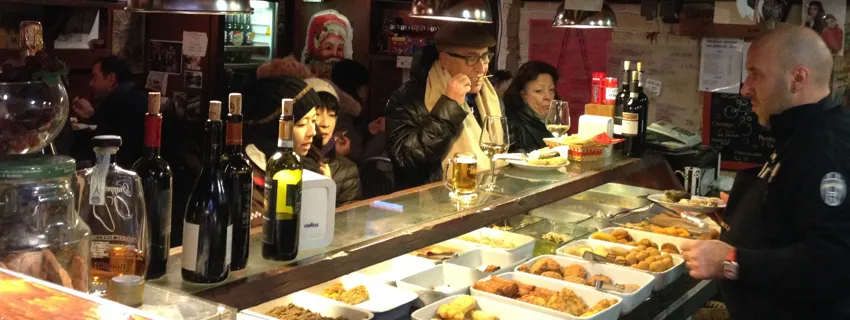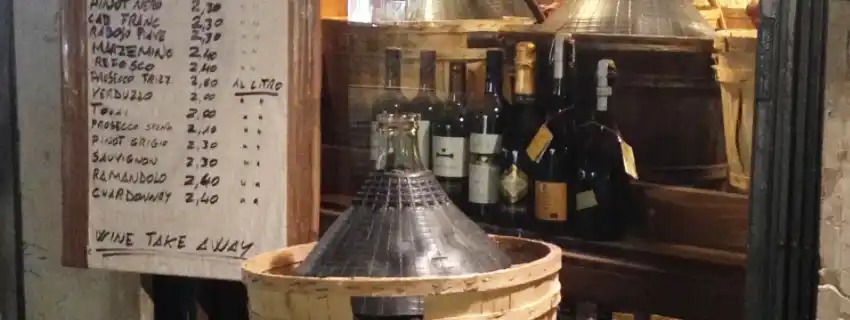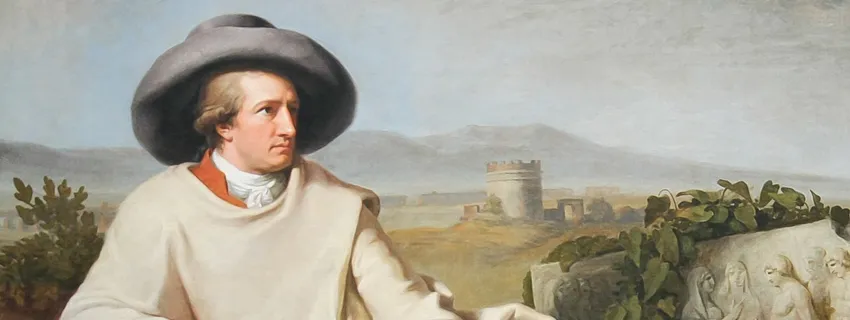Published:
Author: Antonio Maria Guerra
Historic Food Places
The Italian ‘Temples of Taste’
HISTORY, INFO, PLACES, INTERESTING FACTS

Welcome! This section of WebFoodCulture, ‘historic food places’, is dedicated to all those Italian ‘food places’ that, during time, distinguished themselves so much to become part of the imagination of every true gourmet. The following articles include their history, their land, their people, their exquisite specialties and many interesting facts. Enjoy the reading!
Venice, the ‘city on the water’, is also the city of bacari: small, typical taverns where it’s possible to enjoy delicious appetizers, the ‘spuncioni’, accompanied by many glasses of wine, the ‘ombre’. (read more)
Origin: Venice (Veneto) Typology: Historic Food Places
Last update
There are ‘food places’ that, thanks to their history, enjoy immortal appeal. One such place can be found in the Veneto region: a trattoria that has been serving its specialties to ‘wayfarers’ of all kinds since the 1600s, including the scientist Galileo Galilei. (read more)
Origin: Montegrotto (Veneto)
Typology: Historic Food Places
Strolling through the calli, the narrow Venetian alleys, it is easy to come across the ‘bacari’: small, charming taverns where you can enjoy the famous ‘Spritz’ cocktail, as well as some of the most delicious local specialties, the so-called ‘cicchetti’. (coming soon)
Origin: Venice (Veneto)
Typology: Historic Food Places
Coming soon
Even today, when buying a glass of wine in a Venetian bacaro, it would be appropriate to ask the innkeeper for an ‘ombra’ (literally, a ‘shadow’). (read more)

In September 1786, the famous German writer J.W. von Goethe ate at the Trattoria Ballotta, enjoying particularly some dishes: the ’baccalà mantecato’ (creamed cod), the Montagnana ham and the stuffed quail. (read more)
Harry’s Bar is a fascinating place, rightly part of the collective imagination. Over the years, thanks to its customers and their stories, this bar has developed a soul of its own. Two delicious specialties have been invented within its walls: ‘Bellini’ and ‘Carpaccio’. (read more)
Origin: Venice (Veneto) Typology: Historic Food Places
Although many believe, probably because of the name, that Harry’s Bar is a bar, this is only partially true: it’s in fact primarily a restaurant.
(read more)
Copyright information.
To get copyright information about the images on this page, please refer to the copyright section of each article.







